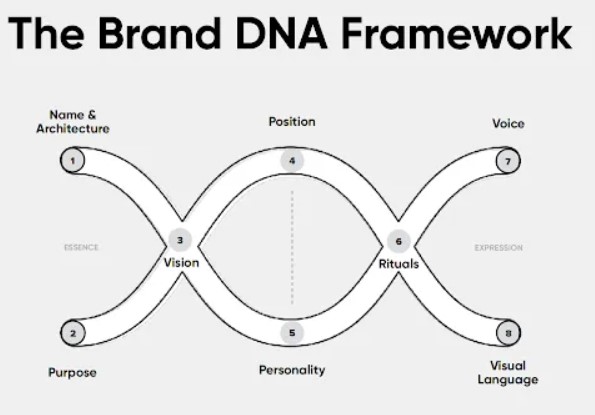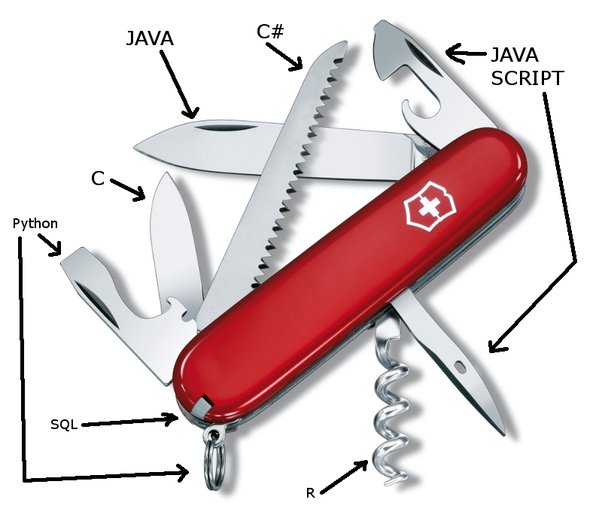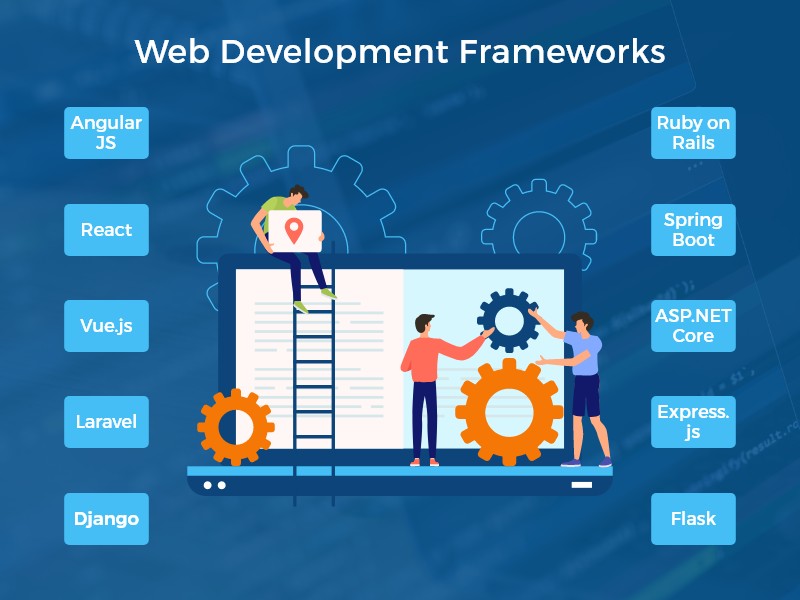Are you looking to unlock the mysteries of programming frameworks? Perhaps you’re wondering why they’re such a big deal in the tech world. Whether you’re a seasoned developer or someone merely dipping their toes into the sea of programming, understanding what is a framework in programming is indispensable. Buckle up as we embark on a deep dive into the intricate world of programming frameworks.
The Genesis of Frameworks: How They Came to Be
Before diving into frameworks, let’s first venture into their origins. The advent of programming frameworks was a breakthrough, a remedy to the chaotic nature of raw coding. Previously, the process was much like crafting a piece of art from a block of marble—arduous and time-consuming. However, the need for streamlined coding led to the birth of programming frameworks.
So, what was the eureka moment that ushered in this change? The answer lies in the quest for standardization and efficiency. Developers yearned for a toolset that would mitigate the risk of inconsistencies and accelerate the time-to-market. Thus, programming frameworks emerged as the knights in shining armor, ready to save the day.
As the world became more technologically savvy, the limitations of pure programming became glaringly apparent. Complex projects required an ever-growing list of features and functionalities. Developing these from scratch would be equivalent to reinventing the wheel—inefficient and needless.
Another catalyst in the proliferation of frameworks was the growing ecosystem of programming languages. As these languages matured, developers noticed that there were common patterns that could be abstracted. This abstraction is essentially what a framework in programming aims to achieve.
The rise of open-source communities also played a pivotal role. These communities are hotbeds for innovation, continually fueling the evolution of frameworks. From monolithic to microservices architectures, frameworks have been instrumental in defining how we approach software development today.

The DNA of Frameworks: Core Components
When you define a framework in programming, you’re essentially talking about its building blocks. A framework is not a monolith; it’s an amalgamation of various components, meticulously designed to work in harmony. Here, let’s dissect what’s under the hood.
For starters, frameworks come with pre-written code. This code base eliminates redundancy by providing a template that developers can build upon. Libraries, a subset of pre-written code, offer functionalities that solve specific tasks, whether it’s data manipulation, network calls, or UI components.
Now, consider middleware, a software layer that acts as a conduit between different applications or between an application and the network. Middleware handles tasks like authentication, caching, and more, freeing the developer from having to implement these from scratch.
In addition to these, a good framework often includes built-in tools for testing. Given the importance of rigorous testing in software development, having these tools readily available is a considerable advantage.
There’s also the concept of inversion of control, where the framework calls the developer’s code rather than the other way around. This is a hallmark of frameworks and makes the coding process much more organized.
Framework meaning in programming extends to the ideology of “convention over configuration,” which emphasizes best practices and standards over individual customization. This philosophy aims to guide developers toward a common ground, ensuring consistency and scalability.

What’s in a Name: Types of Frameworks
To grasp the spectrum of frameworks available, it’s essential to understand the types of frameworks in programming. Each type of framework has its unique selling points and drawbacks, making them suited for specific tasks.
One common type is web frameworks, which streamline the creation of web applications. Examples include Django for Python and Ruby on Rails for Ruby. These frameworks simplify a myriad of tasks, from handling HTTP requests to managing databases.
Next up are application frameworks, which go beyond the web-centric focus to offer a more comprehensive package. These frameworks, like .NET and Java EE, provide the resources needed to build full-fledged applications, be it web-based, desktop, or mobile.
Then we have game development frameworks like Unity and Unreal Engine. These frameworks offer a plethora of features for creating engaging and interactive game environments. They can handle everything from physics simulations to rendering graphics.
In the data science realm, there are specialized frameworks like TensorFlow and PyTorch. These frameworks facilitate the implementation of machine learning algorithms and data processing, making it easier for data scientists to focus on problem-solving.
Another category worth mentioning is microservices frameworks, such as Spring Boot and Micronaut. These are designed to address the complexities and challenges associated with building microservices architectures.

The Swiss Army Knife for Coders: Versatility of Frameworks
Programming frameworks are not a one-trick pony; they are remarkably versatile. They are designed to be modular, allowing developers to pick and choose the components they need. This modularity is crucial for scalability and enables you to tailor the framework to fit your project’s unique requirements.
Most frameworks are language-specific, but some are cross-language, granting developers the freedom to switch between languages without losing their bearing. This is highly beneficial in today’s polyglot programming environment, where it’s common to use multiple languages within the same project.
Also, frameworks often come with plug-and-play extensions or plugins. These add-ons further extend the framework’s capabilities, making it a continuously evolving entity. From database connectors to security modules, the options are endless.
Another noteworthy aspect is the provision for third-party integrations. Frameworks often come equipped with APIs or libraries that make it seamless to integrate with other services. Whether it’s connecting to a payment gateway or linking up with a CRM system, frameworks make it significantly easier.
Frameworks also promote best practices. They provide a structured approach to coding that makes code not only easier to understand, but also easier to maintain. In an era where technology stacks can quickly become obsolete, the longevity and maintainability of your code can make or break a project.

Why Reinvent The Wheel: Benefits of Using Frameworks
If you’re still asking yourself, “why use a framework?”, then let’s explore the concrete benefits they offer. The advantages are numerous, but let’s focus on a few key points that make frameworks indispensable in the programming world.
For starters, they speed up the development process. Given the pre-written code and built-in functionalities, frameworks can significantly reduce the time and effort required to bring a project to fruition. This means quicker time-to-market and lower costs.
Consistency is another major win. Frameworks enforce a standard way of doing things, ensuring that the codebase remains coherent even as multiple developers work on it. This consistency makes it easier to troubleshoot issues and implement updates.
Frameworks also offer high levels of abstraction. This means that developers can focus on crafting unique features and improving the user experience instead of getting bogged down with boilerplate code and repetitive tasks.
Another advantage is security. Given that these frameworks are often the work of numerous contributors and undergo extensive testing, they come equipped with robust security features that protect against common vulnerabilities.
Finally, frameworks provide an excellent opportunity for collaboration. Their widespread adoption means a large community of developers sharing knowledge, plugins, and even contributing to the framework’s growth. Being part of this ecosystem can be incredibly rewarding.
No Free Lunch: The Pitfalls
While frameworks offer a plethora of advantages, they are not without their drawbacks. One of the main concerns is the learning curve. Getting to grips with a framework can be daunting, especially for beginners. The initial investment of time and effort is significant.
Another downside is the potential for bloat. Frameworks come with a lot of built-in features and functionalities, some of which you may never use. This excess can lead to slower performance and higher resource utilization.
There’s also the issue of vendor lock-in. Once you commit to a framework, migrating to another can be a Herculean task. This is particularly concerning if the framework you’ve chosen becomes outdated or stops receiving updates.
Moreover, frameworks can sometimes limit your creativity. Their opinionated nature dictates how you should approach problems, which might not align with your unique needs or ideas. This can stifle innovation to some extent.
Finally, not all frameworks are created equal. The quality, support, and community engagement can vary widely, making it critical to choose wisely. Picking a framework that doesn’t align with your project’s needs can be more of a hindrance than a help.

The Master’s Guide to Framework Selection: Navigating Choices like a Pro
Let’s start by diving headfirst into the deep end of your project requirements. Forget one-size-fits-all solutions; every project is a unique beast with its own quirks and requirements. Are you building a pixel-perfect web application? Maybe you’re assembling the nuts and bolts of a cutting-edge mobile app, or working on a data-driven model on the frontier of artificial intelligence. Whatever the mission, understanding its requirements is your North Star.
Your project’s DNA-its use case, audience, scalability needs, and functional requirements-will give you clues to the framework that best fits your vision. Make a list of what your project cannot live without. Once you have this blueprint, you’re no longer shooting in the dark.
Now let’s talk about language, the dialect your code speaks. While some frameworks are polyglots, comfortable in multiple programming languages, most are purists-they prefer a single language. If you’re a Python aficionado, Django might sing your tune. Or if you’re a JavaScript devotee, maybe React or Angular is calling your name.
The ideal framework should make your code feel at home. It should be an extension of the language you are already comfortable with, or better yet, an expert in. This compatibility reduces friction and makes the coding journey more of a dance than a grind.
Last, but certainly not least, is the learning curve of the framework. Time is of the essence, and unless you have a timer, you can’t afford to spend weeks or months mastering a framework behemoth. When your project has a ticking clock, ease of use is not just a perk, it is a requirement.
A framework should be a tool, not a puzzle to be solved. If the learning curve is steep and you’re pressed for time, this framework may not be your knight in shining armor. Maybe it’s more of a dragon to be slain another day.
Unveiling the Holy Grail: The Epilogue
Voila! Now you’re not just familiar, but intimately acquainted with the subtle art of choosing the perfect framework for your coding masterpiece. The framework universe is as broad as it is deep, pulsating with potential and brimming with choices. From demystifying what a framework is in programming to navigating the labyrinth of options, you’re now armed with the knowledge to conquer your next project. So why compromise with patchwork solutions when you have the Swiss Army knife of coding at your disposal? Choose wisely, code smartly, and make magic happen.